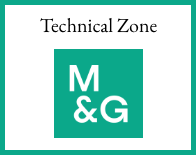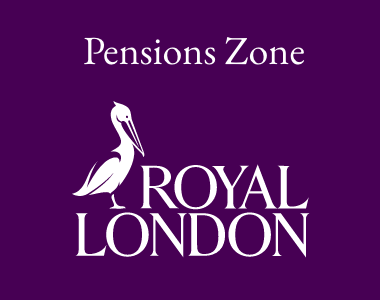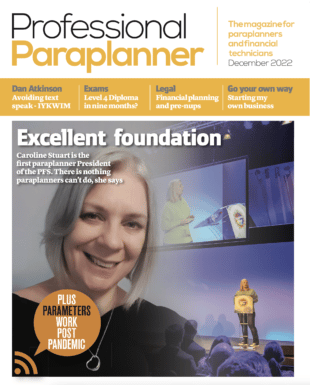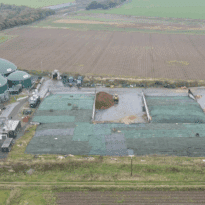What are the implications of the Government’s intention to “bring unused pension funds and death benefits payable from a pension into a person’s estate for inheritance tax purposes from 6 April 2027″. Mark Benson, owner/director of Capital and Professional Consulting Limited, looks at the impact of the proposed changes in legislation, in particular in respect of investment returns earned over the lifecycle of pension saving, drawing and inheriting.
On 30th October 2024 the new Chancellor of the Exchequer Rachel Reeves delivered on the promise made by Prime Minister, Sir Keir Starmer, in August that the 2024 Budget would be “painful”. One group who will particularly feel the pain in the future are families paying Inheritance tax (IHT) following the loss of a loved one, especially those who leave business or agricultural assets from April 2026 and pension funds or death benefits from April 2027.
There has already been much commentary and protest around the effect of applying IHT to these assets on death. However, in this article I will highlight how detrimental this could be to the investment returns earned over the lifecycle of pension saving, drawing and inheriting.
Pensions within Estate Planning
In recent years building up funds within a personal pension has been a simple and powerful strategy for tax-efficient inheritance, since any undrawn pension fund on death would (almost always) be outside of the scope of IHT and would, at worst, pass to beneficiaries net of income tax which is likely to be less costly than a 40% IHT liability provided that the drawdown is sensibly managed. Financial planners would therefore commonly propose that the pension plan is treated as the income source of last resort, favouring drawing from other in-estate resources first.
From my perspective as an Estate Planner & Will Writer, pensions have also been simple to handle since they sit outside of the estate and the grip of IHT provided that funds are not drawn from the scheme and allowed to accumulate unspent in the member’s hands. In addition, their succession is not directed by provisions in the will, rather via the expression of wishes made to the scheme trustees. I have therefore been able to advise clients and to draft their wills without concern about overstepping into the realm of FCA regulated advice which I am not authorised to provide.
The new rules change the landscape dramatically from April 2027.
What we know (and don’t) about the new rules
The Budget Red Book provides scant information, simply stating:
The government will bring unused pension funds and death benefits payable from a pension into a person’s estate for inheritance tax purposes from 6 April 2027. This will restore the principle that pensions should not be a vehicle for the accumulation of capital sums for the purposes of inheritance, as was the case prior to the 2015 pensions reforms.
No draft legislation has yet been published (since the 2027 start means that it was not required to be in the 2024 Finance Bill) and the government has launched a consultation with the pension industry and professions to determine what processes and timescales will be required to allow Personal Representatives to obtain pension fund values from providers to submit probate and IHT returns and for the providers to facilitate payment of the share of the overall IHT liability falling upon the plan.
Despite this uncertainty, we can infer much about the economic effect of the rules since the word “Estate” has a very specific meaning. When calculating IHT liabilities, the Estate value is simply the aggregate of all the property to which the deceased was beneficially entitled.
This includes the free estate that will be directed by the will, the share of jointly owned property passing by succession, the value of qualifying interests in possession and in future the value of undrawn pension benefits.
Most importantly the value of the estate (commonly referred to as “E” in the legislation) is calculated before applying exemptions (such as the spousal exemption, which is expected to be available if the surviving spouse is nominated as beneficiary of the pension plan), reliefs (such as for business or agricultural property) and the nil-rate band (NRB) or residence nil-rate band (RNRB).
The impact on inherited pension values
Commentators have already noted that the inclusion of undrawn pension funds in the estate will in many cases trigger multiple rounds of tax deductions from the pension plan and the general estate. Where the plan member’s estate is sufficient to trigger an IHT charge prior to the addition of the pension plan, the plan will be subject to a 40% deduction.
If the member has died aged 75 or over, the beneficiaries of the plan will also be subject to income tax on their subsequent drawings which could potentially be at the 45% Additional Tax rate if they already have significant income and/or withdrew the whole of a substantial pension fund as a single lump sum. The maximum deduction from the pension plan itself would therefore total 67% of the fund value at death. Where the beneficiary can draw the pension and suffer only basic rate income tax the aggregate deduction would be 52%.
As bad as a 67% deduction sounds, it is far from the worst-case scenario. The inclusion of the pension in the E value means that the pension fund will influence the calculation of tapering of the RNRB that occurs over £2m. £1 of RNRB is lost for each £2 that E exceeds this threshold. In practice, tapering therefore results in an additional 20% of IHT applying to the general estate to the extent that the pension value takes E into the range from £2m to £2,350,000 for a single person’s estate or £2,700,000 upon the second death of a couple where the RNRB of the first to die has been transferred to that estate.
If we factor that deduction into the previous calculations, we find that the total percentage of the pension fund deducted from the overall estate could be 72% for basic-rate taxpayers, 84% for higher-rate payers and 87% for additional-rate payers.
But… a pension is for life
After several conversations with my financial adviser contacts I realised that another important way to look at this is to consider the effect on the overall returns generated across the lifetime of the pension planning, including the saving/accumulating phase, the drawdown phase and ending with the inheritance of any remaining funds on death.
We have therefore been developing a calculator to model each of these phases, taking into account the income tax rebates given on contributions and the deductions taken on drawings and after death, the future IHT charge that will apply to the pension plan itself and any additional tax applied to the wider estate. The calculator then recalculates the rate of return enjoyed on the investments made within the fund to show the overall effect of the tax rebates and deductions over the whole lifecycle of the pension.
The model applies any contributions or drawings as a single transaction at the start of the calculation year and then calculates the end of year value factoring in the applied growth rate (assumed to be net of advice and investment charges). This is repeated for each year modelling a contribution phase followed by an optional “coasting” phase where no funds are added or withdrawn and then an optional drawing phase where funds are drawn as PCLS, taxable income or a combination of both. Finally, the effects of IHT and income tax on any remaining fund at death are calculated.
If the pension contributions are set to claim a higher or additional rate rebate, the extra rebated amount, over the basic rate rebate captured within the pension plan, is tracked as an outside pension investment growing at the same rate as applied to the pension.
This is assumed to be in an ISA wrapper and so free from lifetime taxes.
The key calculation takes the net of tax cashflows year by year – the net contributions, net drawings and net death benefits – and performs an internal rate of return calculation to show the true annual rate of return after all taxes.
Since the calculation does not factor in specific product charges, and the user is free to model any desired growth rate, it is not suitable for direct presentation to a client as it does not fulfil the requirements of a regulated product illustration. However, as a means to understanding the effect of tax rebates and deductions on pension planning it is highly informative.
The pension plan returns boost
Saving for retirement via a personal pension can boost the returns earned on the underlying investments in a number of ways.
To start, let’s imagine saving into a pension for 15 years and claiming 20% basic rate tax relief on the contributions. We follow this accumulation phase by drawing the fund down to zero over a further term of 15 years and paying basic rate tax on the whole of the drawings. The tax rebates and deductions are therefore effectively a wash.
Under this scenario there would be no boost to the rate of return – i.e. if the investments returned 5% per annum over the whole period the true return shown in our model would also be 5%. This would be the same as saving the net funds into an ISA without contribution tax relief and then drawing down without tax deduction (assuming the same investment returns and charging structure applied).
The first possible advantage of the pension plan is that the tax relief on contributions may be at a higher rate than the eventual deductions on later drawings. For example, if our saver enjoys 40% higher rate relief on contributions but is only a basic rate payer on the drawings then the return on our 5% p.a. growth after 15 years in, 15 years out would be boosted to nearly 5.96% p.a., as calculated by the model.
The second benefit is that the pension plan allows 25% of the fund to be taken tax free as Pension Commencement Lump Sum, subject to the standard individual lump sum allowance, currently £268,275.
If we use a phasing strategy and consider 25% of each annual drawing to be PCLS and not subject to income tax, our return (if unaffected by the lifetime allowance) is further boosted to over 6.31% p.a.
A further improvement on the return enjoyed by the pension plan member will result from any employer’s contribution made, in particular where this represents sums that are offered in addition to the regular salary.
Using the pension for Estate Planning
The above scenario, where the pension is fully exhausted just in time for death, will of course be unaffected by the new rules and the tax-efficiency of the pension wrapper remains compelling where the fund is used to provide drawings for the member in lifetime.
Of course, many funds will not be fully drawn by the time of death. This could be for any number of reasons ranging from death at a younger age than hoped to planned use as a succession vehicle. For many people saving via a personal pension plan however, any surplus remaining upon death is likely to arise from taking a necessarily cautious approach to saving and drawing to reflect the fact that the individual saver bears all of the risk with respect to setting appropriate contribution levels and managing investment risk and longevity risk.
Let’s rerun the model, keeping the cumulation phase the same but removing the drawings and allowing the pension to coast and accrue gains for the last 15 years so that the whole of the pension fund remains at death, which we will assume occurs after 6th April 2027 and at an age of 75 or over.
Factoring in an IHT charge of 40% followed by a drawing income tax rate of 40% (which is reasonable if the whole lump sum is taken in a single year) our 5% annual investment return is shredded and falls to just 1.57%.
Yet, of course, it could be much worse!
Let’s consider the most painful scenario where the addition of the pension fund value falls into the range that causes the RNRB to be tapered. For example where the rest of the estate is worth about £2m on second death of a couple and the pension fund adds an amount of up to £700,000 to span the tapering band. This results in an effective IHT rate of 60% across that part of the estate and pension.
Our model now shows a true annual rate of return of -2.11%
Think about that… 30 years of saving capturing 5% per annum investment returns to end up with less than you have put in!
The raw numbers reflect this. We modelled 15 years of £8,000 per year net contributions (£10,000 gross) equating to £96,000 input by the member. After the full 30 years the plan is worth £471,033 before deductions. The deductions that result are £188,413 IHT taken from the pension fund followed by £113,048 in income tax leaving £169,572 net in the plan, but also a further £94,207 in additional IHT applying to the rest of the estate giving an effective net amount from the pension of £75,365 or less than 80% of the amount that the member contributed out of NET income.
A budget for… fairness?
The Budget Red Book states:
The government is making the inheritance tax system fairer by applying inheritance tax to unspent pensions pots.
In my view the government has taken fairness too far in this instance.
The future of pension and estate planning
One key conclusion has jumped out in discussions with my adviser contacts following the Budget announcements. In future, we must work more cooperatively and look at the interface of pension and estate planning together.
For the financial planner: The simple assumption that pension funds could be drawn last no longer applies and greater consideration must be applied to prioritising the potential sources of income in retirement.
For the estate planner: The potential level of undrawn pension is now a critical consideration when drafting wills and considering the timing of legacies, in particular where estates may be brought into the crosshairs of RNRB tapering and especially for couples where it may be even more important to make first death legacies to avoid the bunching of capital in the estate of the survivor.
Mark Benson TEP is owner/director of Capital and Professional Consulting Limited providing estate planning consultancy and professional will-writing services to financial advisers and their clients, as well as to WAY Trustees Limited, a national provider of trusts and professional trustee services to wealthy individuals and their families.
Mark is a Registered Trust and Estate Practitioner member of STEP and a Member of the Society of Will Writers.
Main image: zdenek-machacek-l1vfj2y13tk-unsplash































